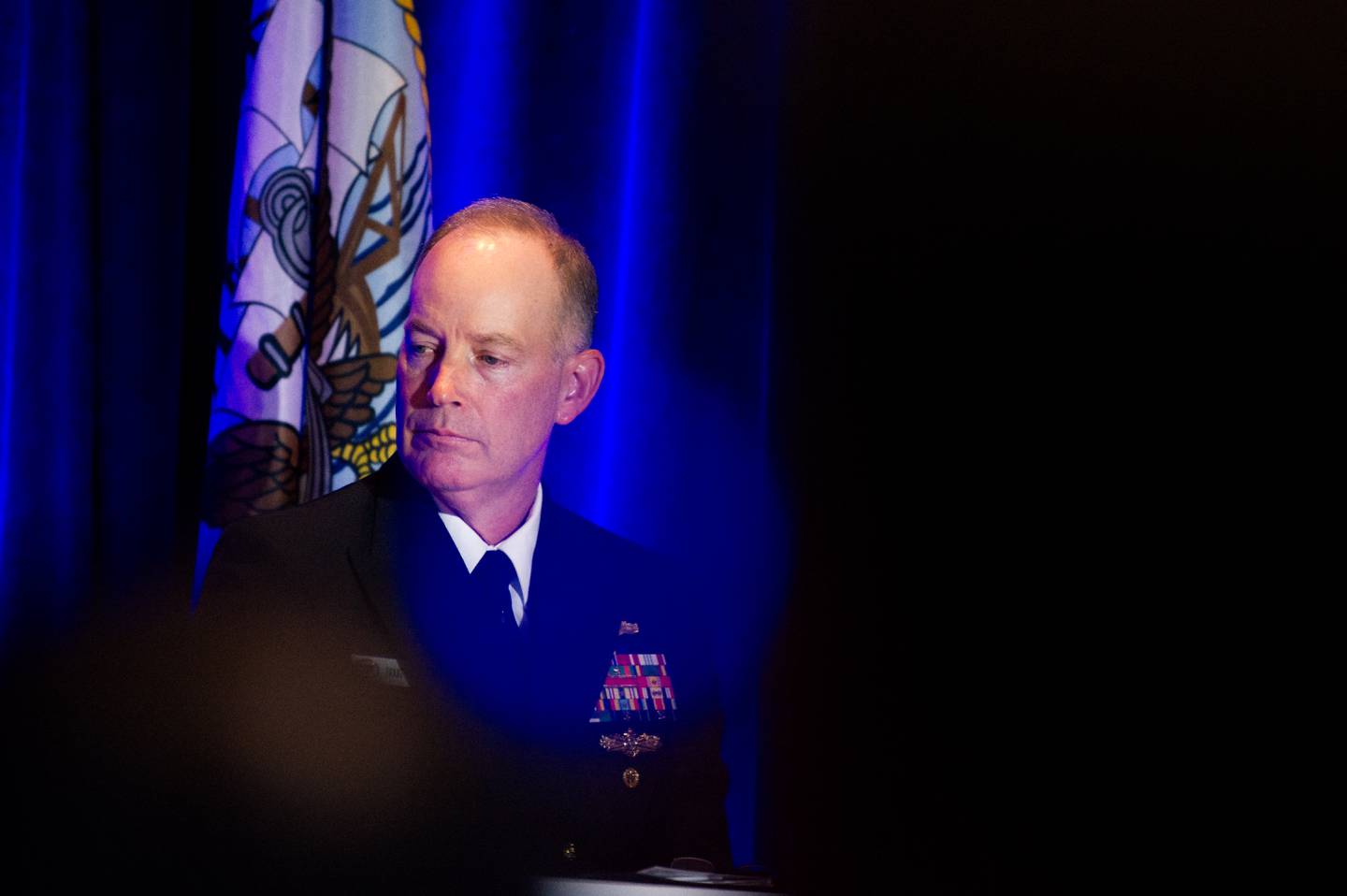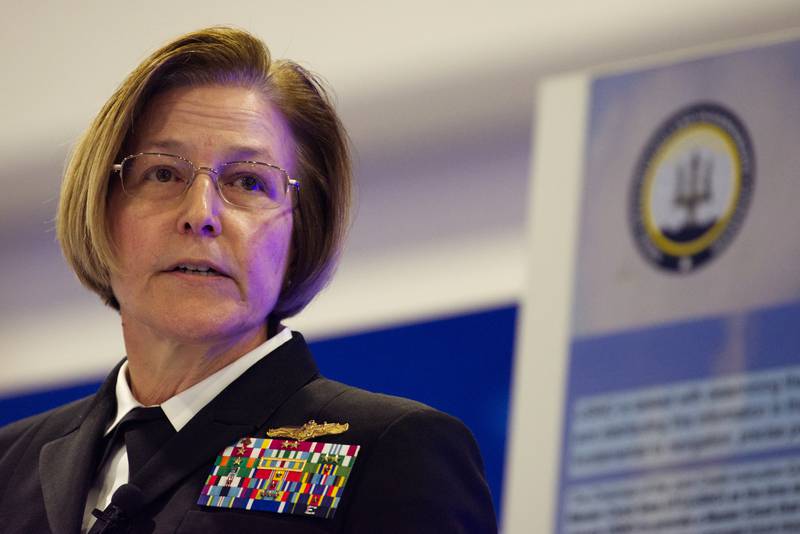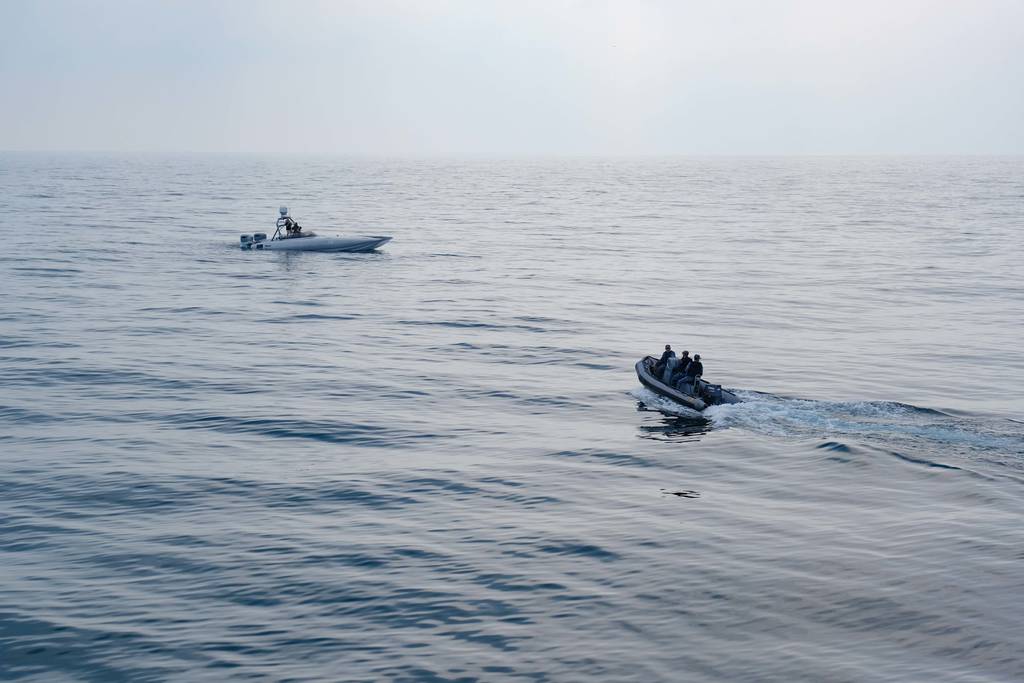NATIONAL HARBOR, Md. — Unmanned technologies for years have been used to scout dangerous areas, schlep much-needed supplies and deliver destructive payloads.
But for one U.S. Navy commander, there’s another more-promising application.
“For unmanned systems, I think electronic warfare- and cyber-related mission areas are the ‘killer app,’ if you will,” Rear Adm. Doug Small said April 10 at the Sea-Air-Space defense conference here. “That is the growth imperative.”
Small is the leader of Naval Information Warfare Systems Command, what he calls the service’s “Geek Squad.” He’s also the head of Project Overmatch, which seeks to digitally link sailors, Marines and their vessels over vast distances. Little has been shared about the project since its inception in 2020, with officials attributing the secrecy to Russian and Chinese monitoring.
Outfitting unmanned vehicles or vessels with jammers, spoofers and other gear capable of wreaking electronic havoc is “absolutely critical,” according to Small. EW represents a battle over the electromagnetic spectrum, which militaries for decades have relied upon to communicate, identify friend from foe, and guide weapons to their targets.

“These smaller vehicles, commercial vehicles, have the capability to provide effects,” he said. “And if we architect it correctly, and make sure that, again, we can bring those AI-enabled autonomous behaviors to those vehicles, there are any number of missions that we can accomplish.”
The Navy is investing in unmanned systems — on the water, as well as above and below it — to augment existing and near-future firepower. A service strategy known as the Navigation Plan at one point included an outline of a fleet comprising roughly 373 manned ships and 150 uncrewed vessels.
Defense News previously reported the Navy was realizing its manned-unmanned teams in three phases: experimentation from fiscal 2024 to 2028; deployment in fiscal 2029 through 2033; and full-fledged operations in the years thereafter.
“One of the key things is establishing and expanding this naval operational architecture throughout the Navy, to include unmanned systems. Part of our role is extending that connectivity to these unmanned systems,” Small said. “Our North Star is a hybrid fleet.”
Former Chief of Naval Operations Adm. Michael Gilday last year said unmanned vessels with the ability to confuse adversary electronics, spy on distant activities and coordinate the flow of fighting would play an increasingly important role in the service’s mission.
Work to realize such a concept, he said at the time, is underway.
RELATED

“Think about medium unmanned vessels that have [command-and-control] capabilities, that have [EW] capabilities, that can, perhaps, even have cyber capabilities,” Gilday said. “That kind of work is happening now.”
The defense industry is taking the hint, too. Northrop Grumman plans to participate in two events this year to demonstrate autonomy and EW kits it is developing for unmanned surface vessels under its Project Scion initiative.
The project leans on tech in other domains, such as aerial drones, ground robotics and smart buoys, to quickly produce equipment that can turn platforms into “true combat-and-surveillance systems for our customers,” a Northrop business development manager told C4ISRNET in February.
Colin Demarest was a reporter at C4ISRNET, where he covered military networks, cyber and IT. Colin had previously covered the Department of Energy and its National Nuclear Security Administration — namely Cold War cleanup and nuclear weapons development — for a daily newspaper in South Carolina. Colin is also an award-winning photographer.








